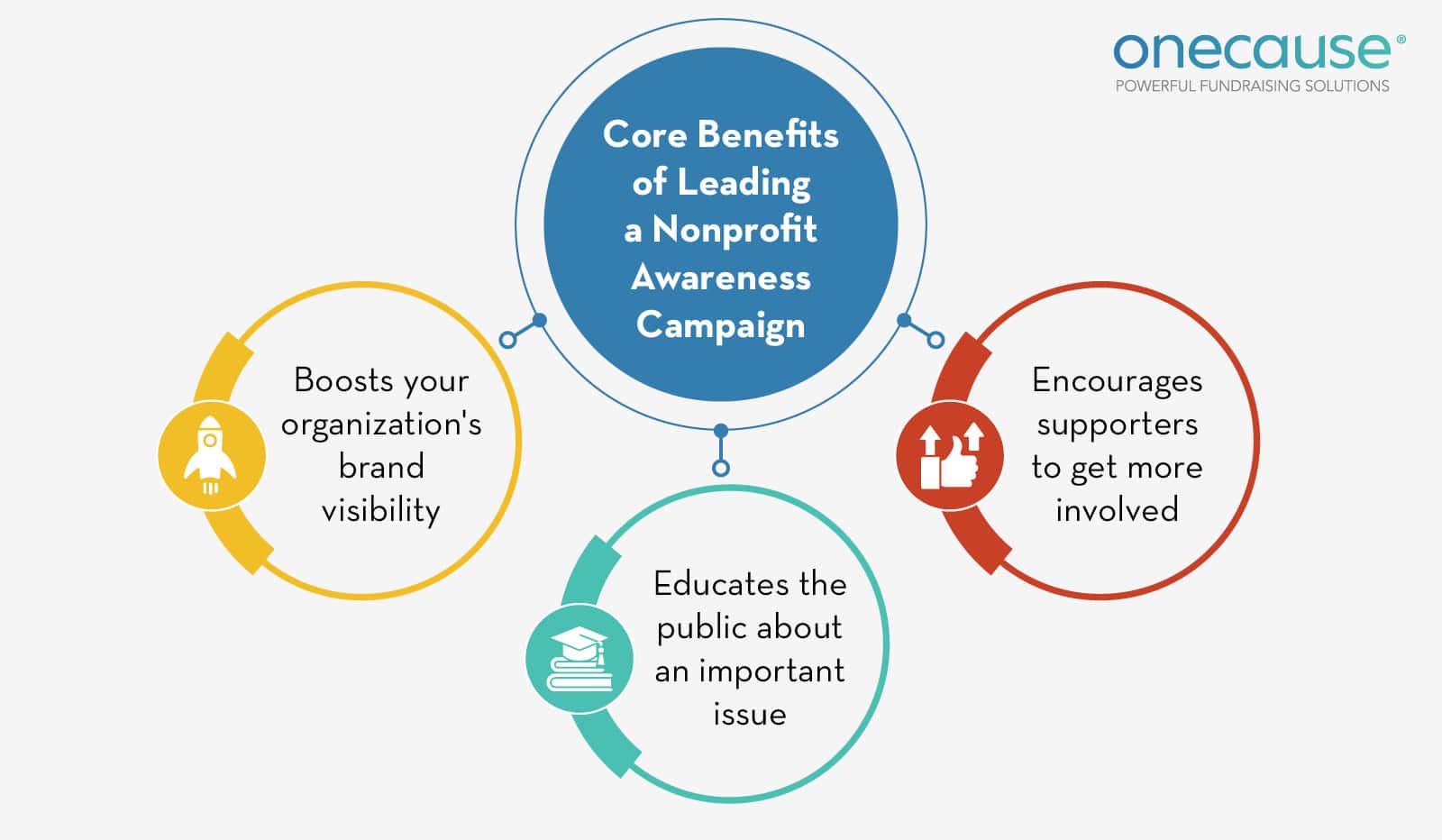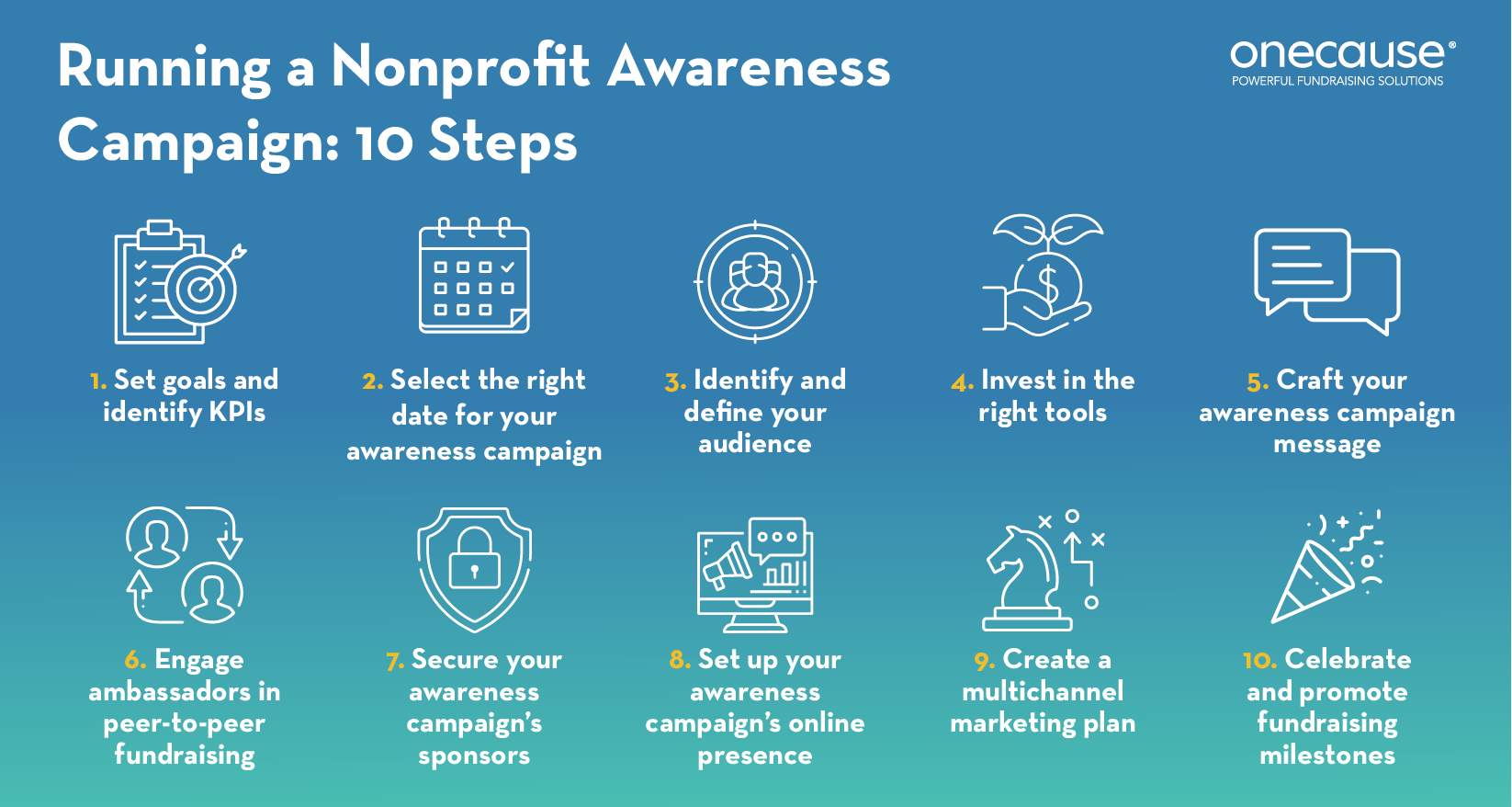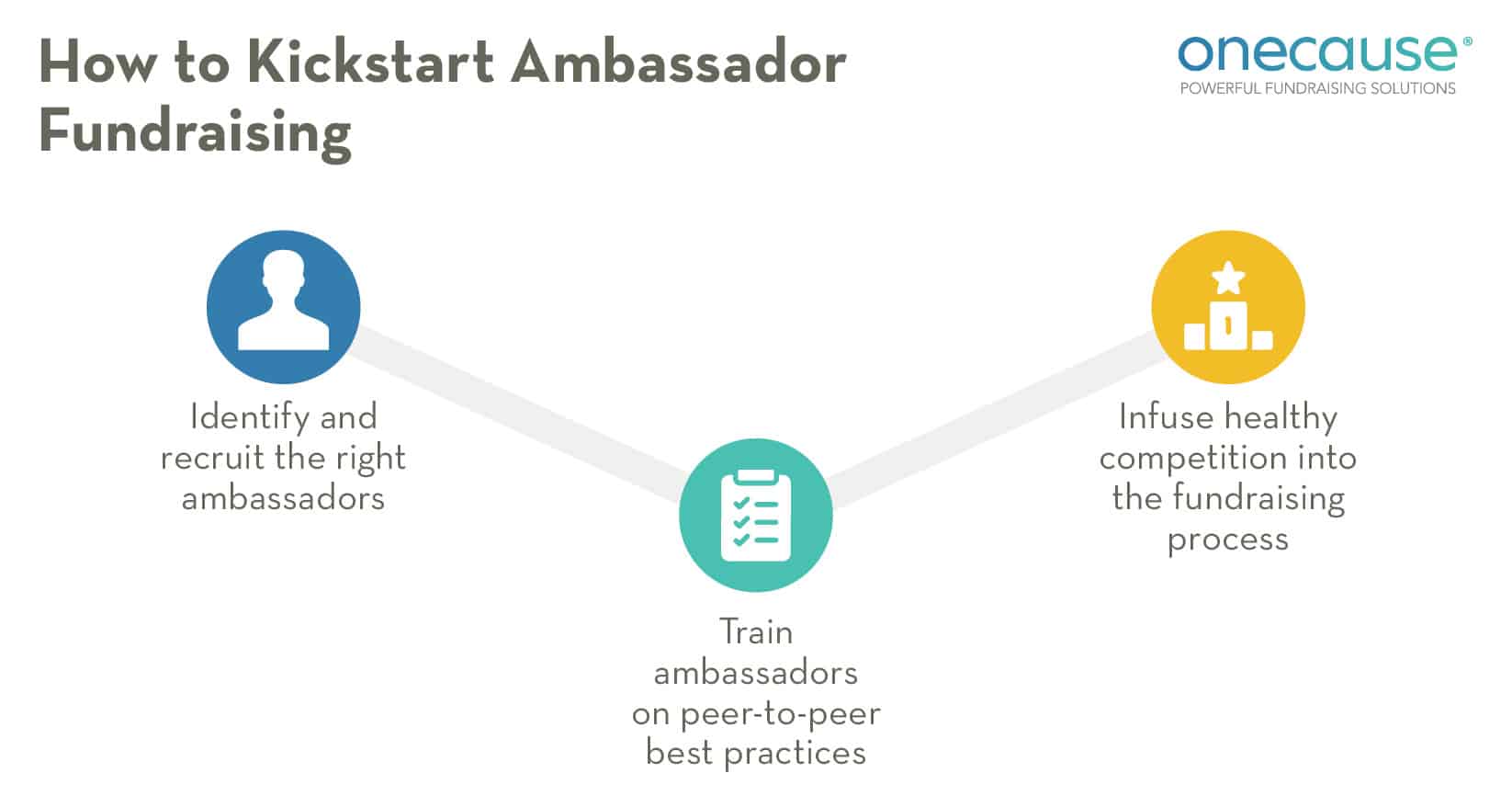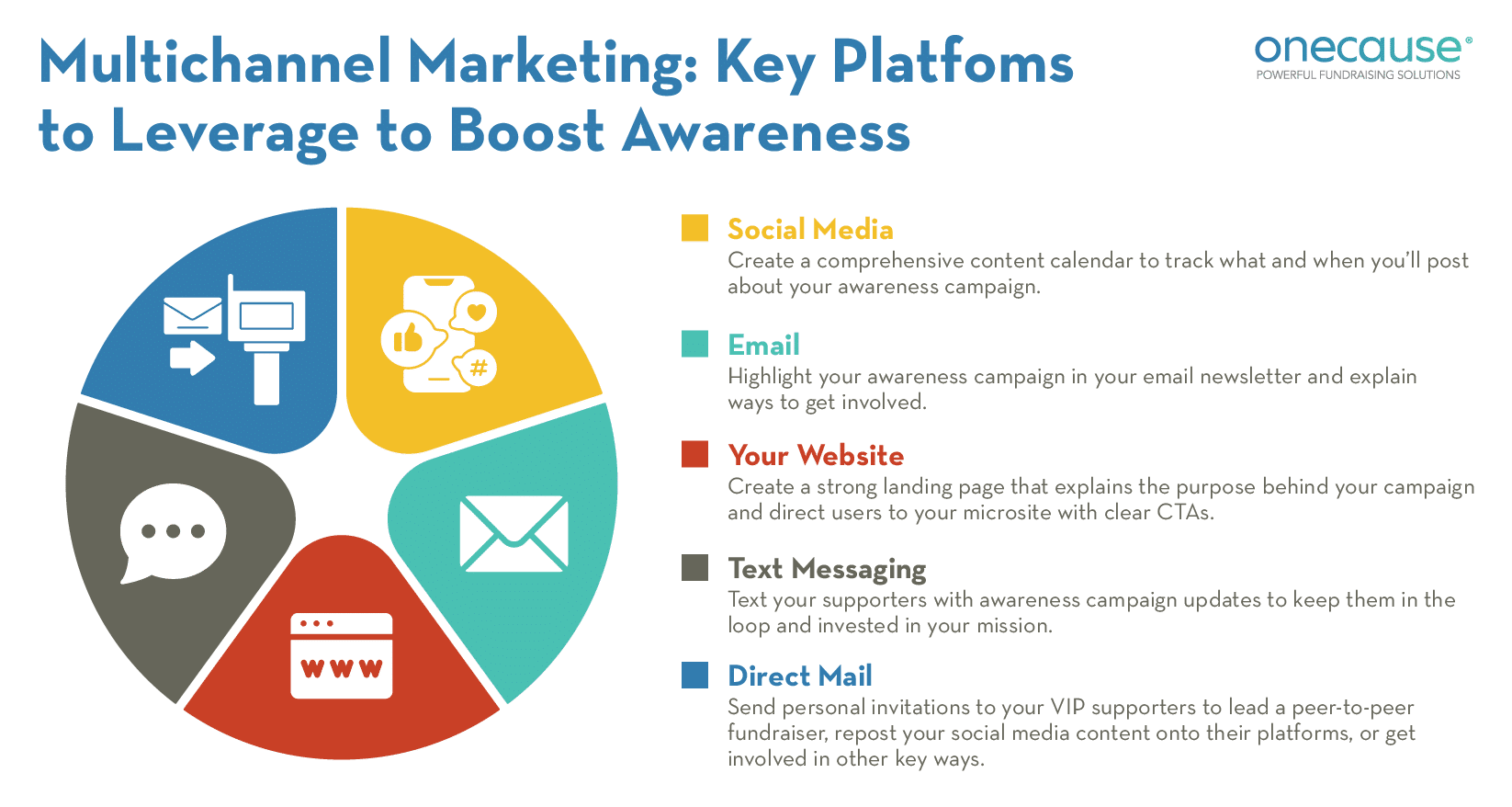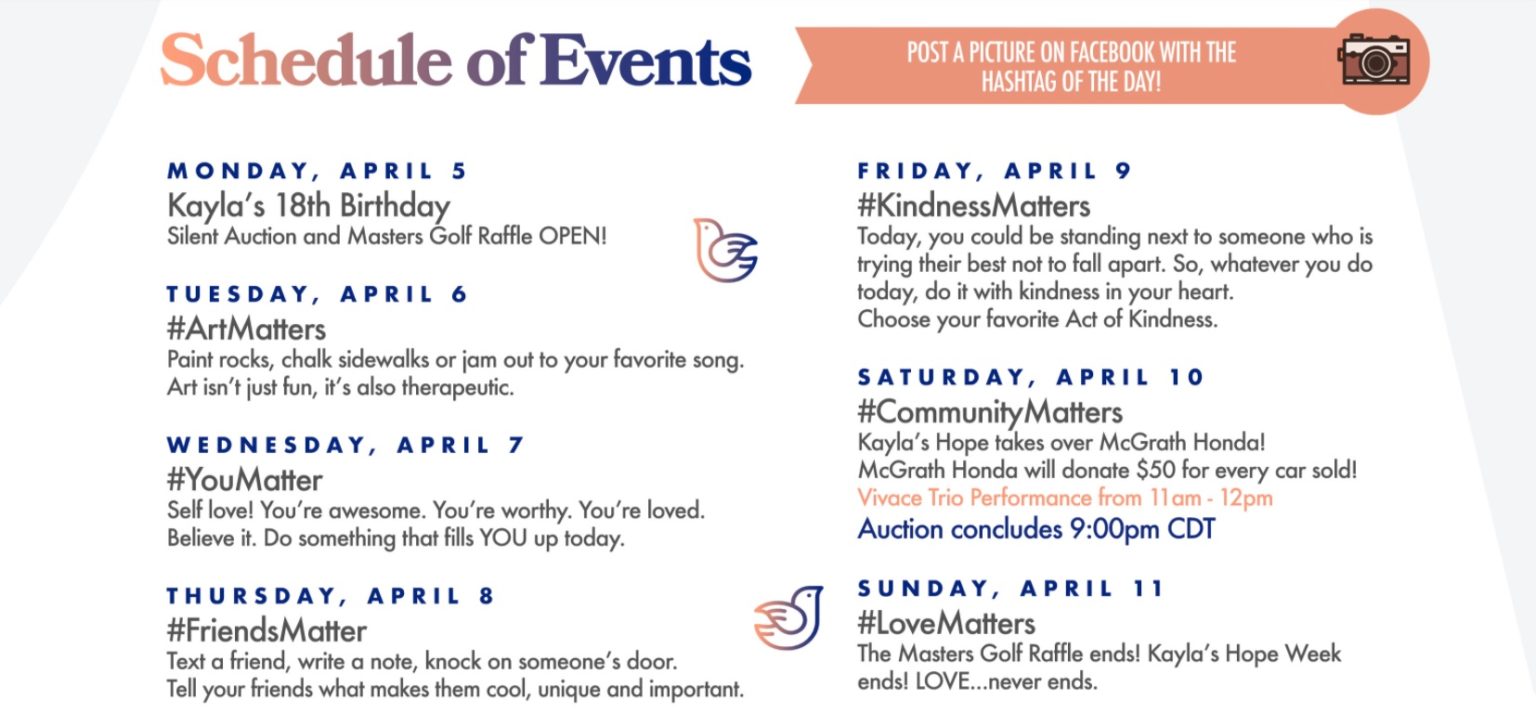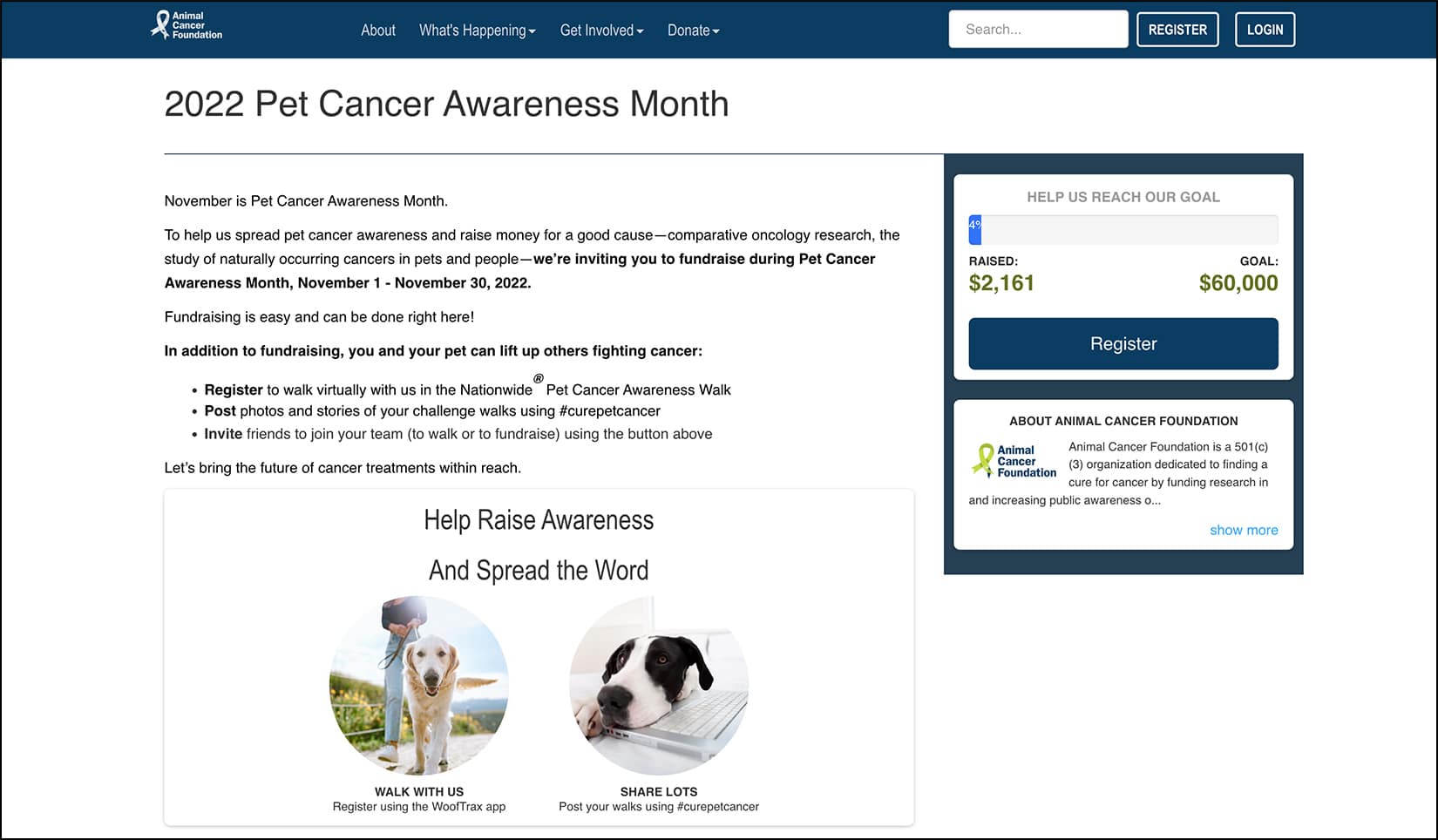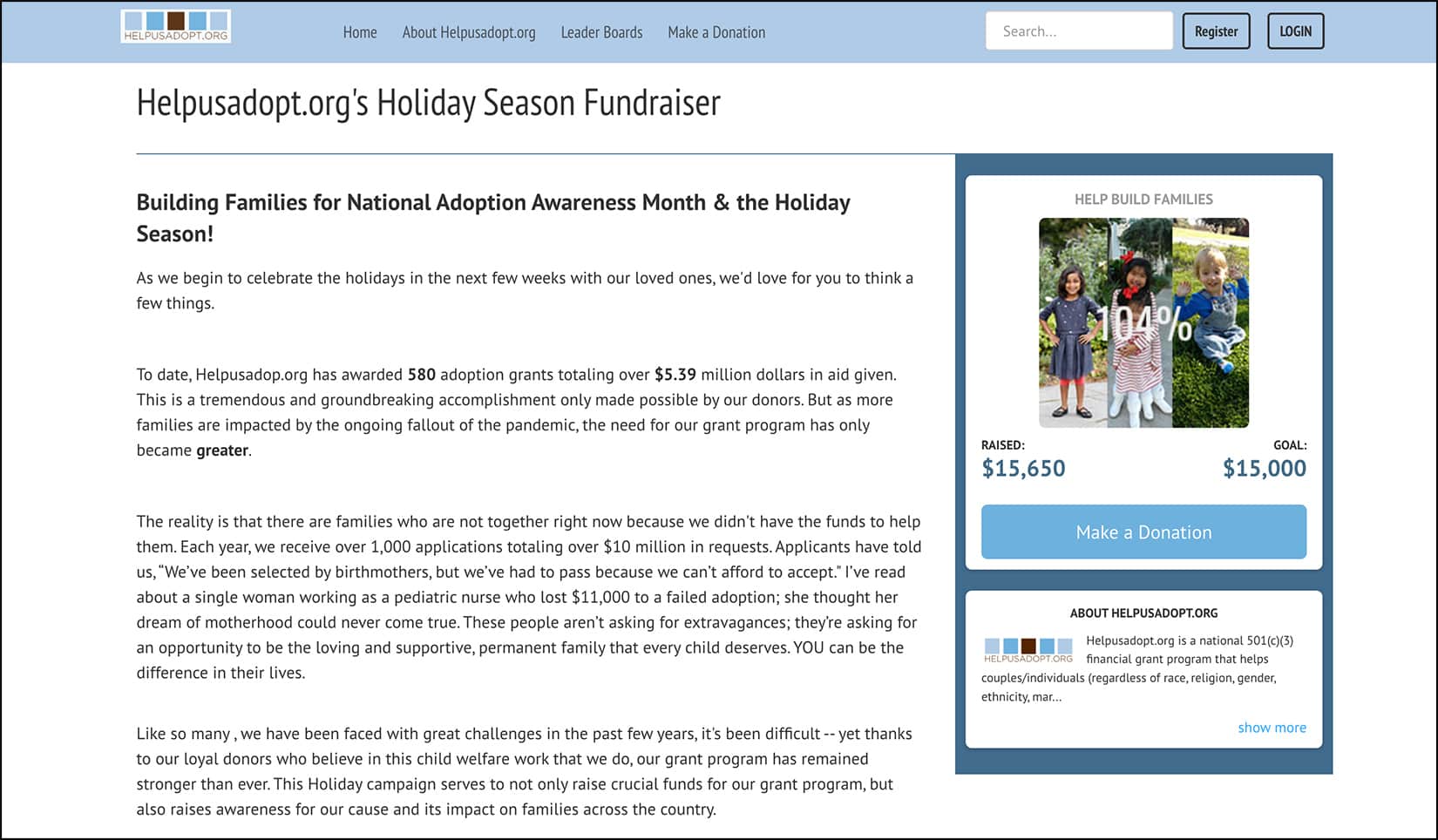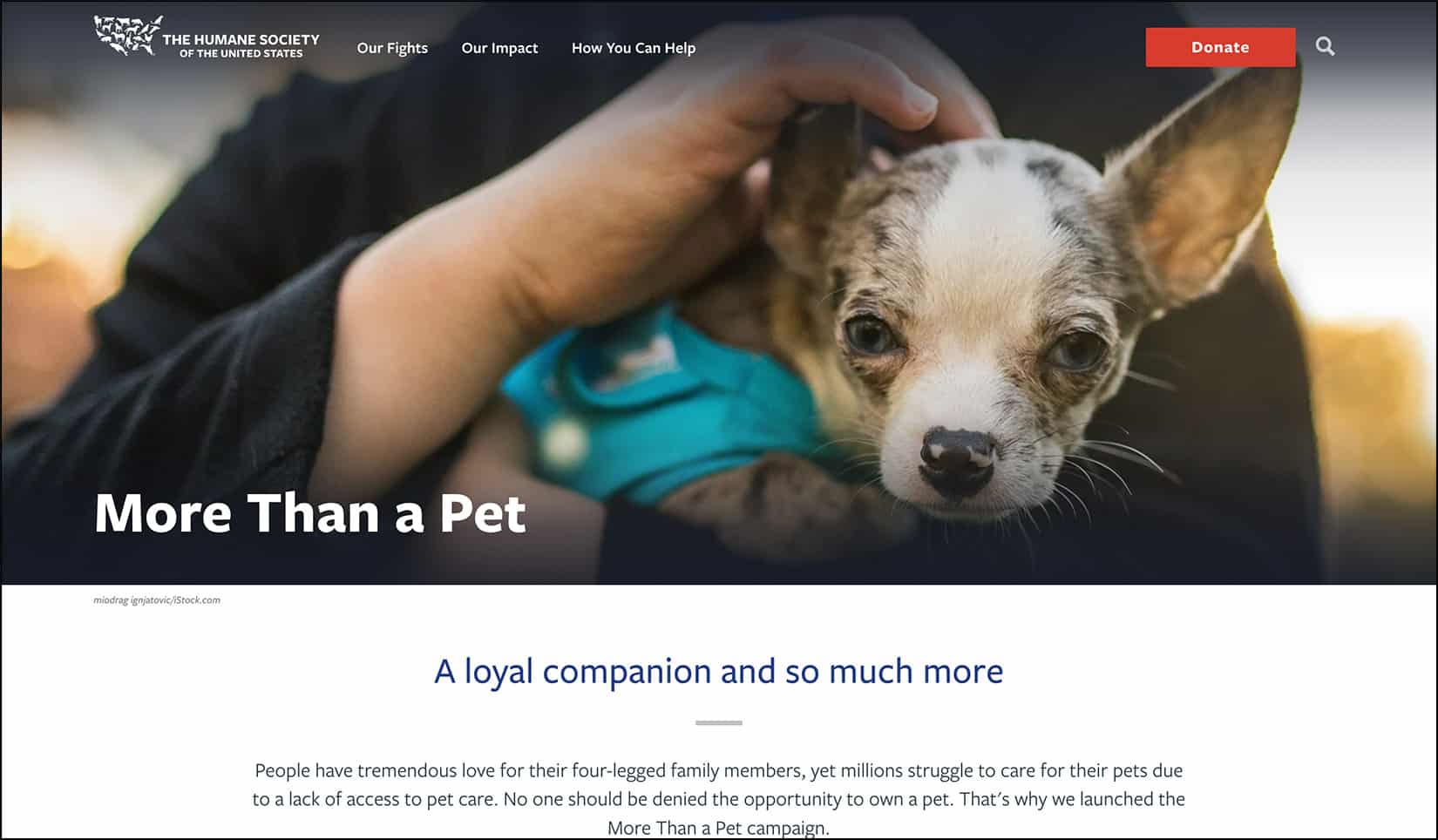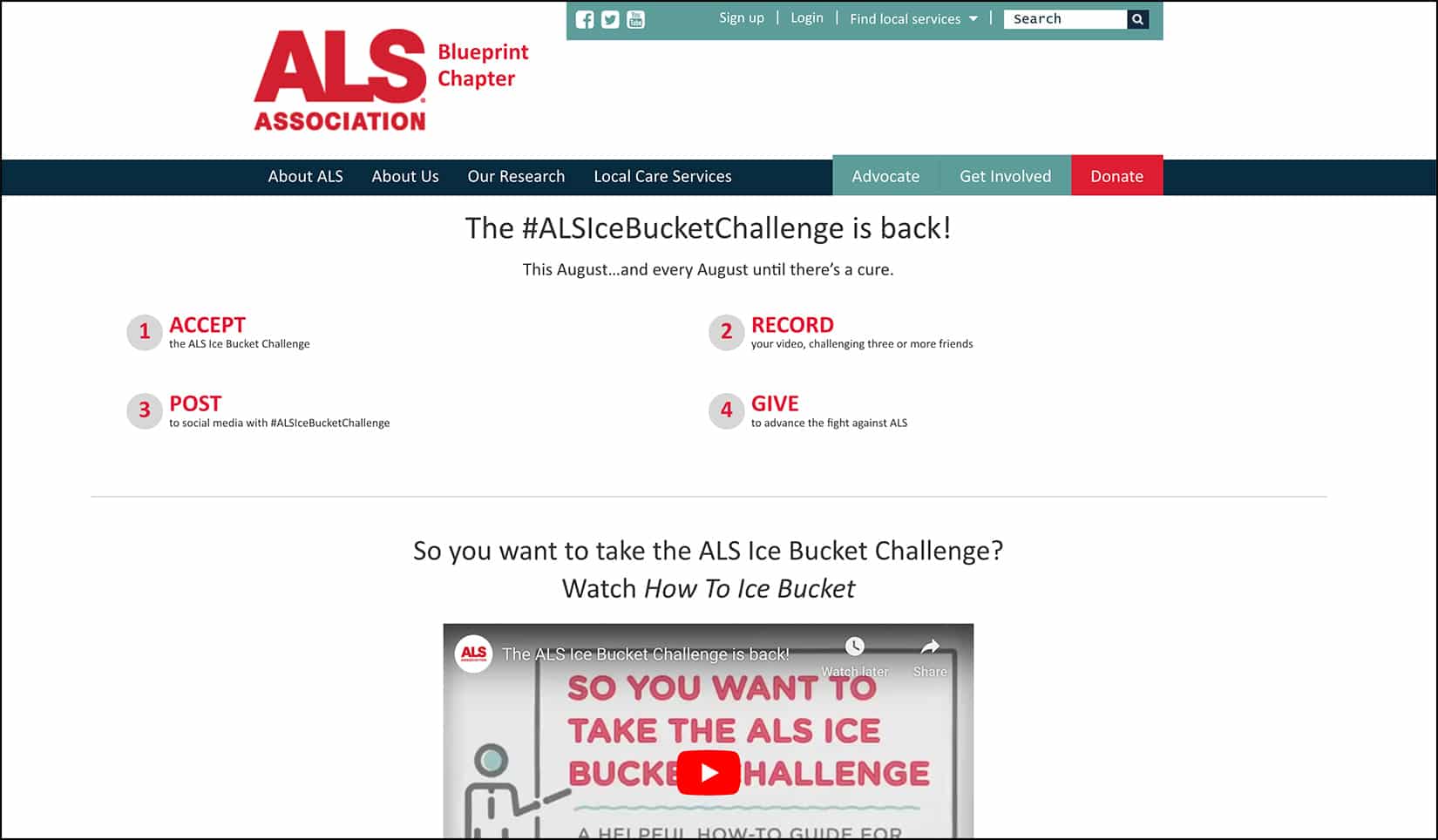Creating a Standout Awareness Campaign: A Complete Guide
Your nonprofit depends on a growing community of supporters to push your mission forward. But, as you well know, it can be difficult to grab the attention of your target audience and motivate them to get involved. How can you get your organization in front of as many people as possible and amplify your cause?
The answer is with a well-designed awareness campaign. Awareness campaigns are one of the most popular, effective, and flexible ways to raise public interest and educate your community about your nonprofit’s mission.
This guide will cover everything you need to know to host an impactful awareness campaign, including:
- Awareness Campaign Basics
- How to Start an Awareness Campaign: 10 Steps
- Common Mistakes to Avoid for Your Awareness Campaign
- 5 Top Awareness Campaign Examples
You don’t need to be a multi-million dollar organization to get the word out about your cause. You just need the right strategies and tools to put your organization on the map. Let’s dive in!
Awareness Campaign Basics
Let’s start with the essentials:
What are awareness campaigns?
An awareness campaign is any time-bound, strategic campaign aimed primarily at increasing public visibility and awareness for your cause. For nonprofits, this means planning a campaign to spread the word about your mission, why it matters, how your organization is working hard to tackle a given issue, and why you need their support.
By hitting all of these objectives, your nonprofit will unlock a number of key benefits and inspire the necessary support you need to accelerate your mission.
You’ve certainly heard of one of the biggest awareness success stories in history, the ALS Ice Bucket Challenge, which has raised more than $115 million for ALS research since it began in 2014. As evidenced by this well-executed challenge, awareness campaigns have the power to skyrocket your nonprofit’s cause to viral success, giving you more reach than ever before.
What are the goals of an awareness campaign?
First and foremost, the main goal of an awareness campaign is to raise visibility for your organization. By spreading awareness of your nonprofit’s cause, you’ll grow your audience and create a stronger base of support to drive your mission forward.
However, it can be difficult to measure “raising awareness” as a concrete goal. This is why many nonprofits choose specific key performance indicators (KPIs) to gauge the success of their awareness strategies. Common goals for awareness campaigns involve audience growth and digital engagement. We’ll cover the KPIs you can use to measure these goals in a section below.
Note: Remember, generating donations isn’t a core goal of awareness campaigns. While your awareness campaign likely will result in increased donations to your nonprofit, fundraising shouldn’t be the central purpose. Keep the focus on spreading the word and showing a wider audience why your work matters – the donations will follow!
When would a nonprofit launch an awareness campaign?
To leverage existing public attention around a certain issue, you can host your awareness campaign to coincide with a national awareness day, week, or month. For instance, Black History Month in February or Mental Health Month in May would be perfect opportunities to launch awareness campaigns if your nonprofit’s work relates to either of those topics.
However, you can also host a standalone awareness campaign if your nonprofit simply wants to grow its audience and reach new supporters at any given time. The rise of social media and the accessibility of virtual events have made it easier than ever for nonprofits to launch successful campaigns on their own.
If you’re strategically thinking ahead, growing your audience a year or more before a major expansion project or capital campaign can help you build a stronger foundation for future growth.
How to Start an Awareness Campaign
Follow these tried-and-true steps to craft the perfect awareness campaign for your organization.
1. Set goals and identify KPIs.
Start planning your awareness campaign by determining its focus. As mentioned above, awareness campaigns are typically either standalone projects or hosted as part of broader national awareness days, months, or weeks.
Next, take time to reflect on your mission and your supporters. You already understand your mission, but it’s worthwhile to think about what motivates your most loyal donors. Ask questions like:
- What draws donors to your mission?
- What messages and events are the most engaging for them?
- Are they interested in annual giving or do they fall into the social donor category?
- What aspects of your mission do you want to draw the most attention to?
- What’s the current public perception of your cause?
- Will you target mainly existing donors, or will you aim to grow your audience with new supporters?
These insights are useful to gather in advance, as they can help shape the specific strategies and goals that you lay out for your awareness campaign.
Awareness Campaign KPIs
Although the ultimate goal of an awareness campaign is to increase the visibility of your mission, you need concrete ways to measure that growth and visibility. Determine what KPIs you’ll use to track audience growth and engagement rates.
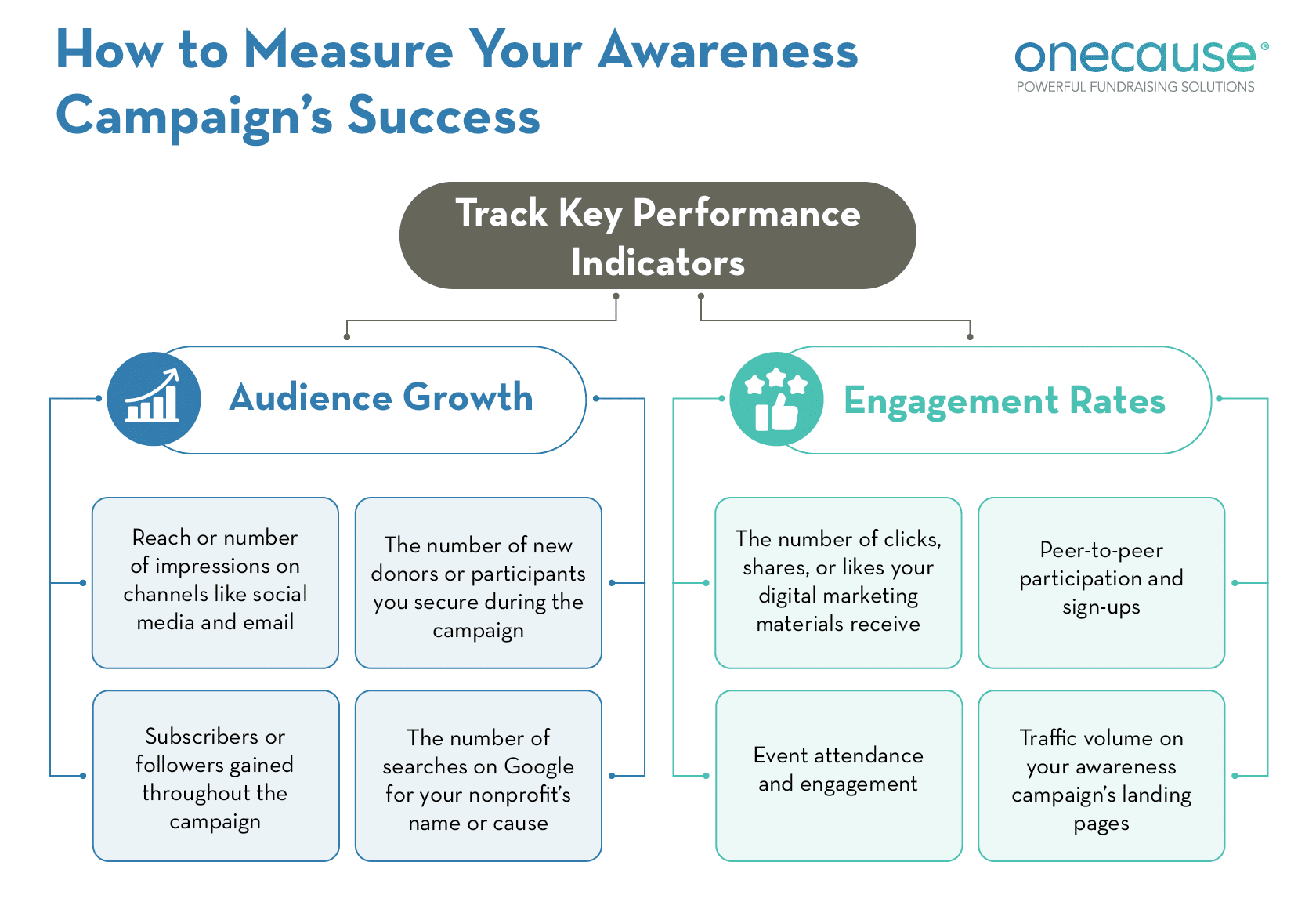
It’s important to set your awareness campaign’s goals (and the specific KPIs you’ll use to measure them) early in the planning process. When you know what you’re aiming for, it’s much easier to craft a strategy that will get you there.
2. Select the right date for your awareness campaign.
As with any campaign, you need to allow enough time for your team to plan your awareness strategies and for your audience to thoroughly engage with it. This allows your cause to build momentum over the course of the campaign.
Determine a specific timeframe for your awareness campaign with plenty of time set aside in advance for planning and preparation. If your campaign coincides with an existing national awareness month, week, or day, build your timeframe around it.
For standalone campaigns, consider your audience and the scale of your goals when choosing a timeframe. Will a single day of awareness activities be enough to help you reach supporters, or will a week or month be better suited to your goals?
Regardless of the exact focus of your awareness campaign, we recommend either kicking off or concluding it with a main event (either in-person, virtual, or hybrid). An event will help you capitalize on your audience’s energy to keep them engaged until the end or to encourage them to keep taking action after your campaign ends. Just be sure to give yourself enough time to plan it and promote it to supporters.
3. Identify and define your audience.
While some awareness campaigns might target a nonprofit’s entire supporter base, this isn’t always the case. You’ll need to consider who you’re hoping to engage now so you can develop the marketing and outreach strategies that will be most effective. Narrowing down your audience segment can help your team better target the message, voice, and specific communication channels of your campaign.
Develop donor personas to pinpoint the supporters who’ll be most likely to engage with your awareness campaign. Explore your CRM to learn more about audience demographics and answer questions like:
- Who has participated in past awareness campaigns?
- Who are our most loyal supporters in terms of long-term engagement, donations, and event attendance?
- Where are most of our supporters located?
- How old are our target supporters?
- What types of campaigns or messages have been most effective at engaging them?
As you answer these questions, think about where these donor segments overlap. Those intersections will be ideal places to focus your efforts. For instance, supporters who’ve given to your organization before, are located in your city or region, and engaged with you through an online channel might be the perfect segment to focus on reengaging through an awareness campaign.
As your campaign strategies come together, continue using audience segments and past data on the performance of your marketing campaigns to finetune your outreach.
4. Invest in the right tools.
Running an awareness campaign involves a lot of moving parts, from developing your communications strategy to setting up a digital fundraising page where inspired supporters can give. Rather than overloading your nonprofit’s team with time-consuming and challenging tasks, you can streamline your entire campaign planning with the right fundraising platform.
Leverage an all-in-one fundraising platform that has everything you need to craft an impactful awareness campaign, including:
Microsite builder
With the help of your fundraising platform, you can easily create a custom microsite where donors can learn more about your mission and give online to your organization, whether they’re visiting on desktop or mobile.
According to the OneCause Guide to Giving & Awareness Days, 63% of donors are more likely to give to a nonprofit when their mission is clearly highlighted, so a comprehensive microsite that explains the purpose of your campaign and how it connects to your vision for the future can help you build a strong support base.
Plus, 62% of donors are interested in knowing your organization’s impact before they give to awareness campaigns, signaling that you’ll need to include an impact statement on your microsite that demonstrates what donations go toward. All of this and more can be easily set up with a robust online fundraising solution, so look for software that has flexible options and offers rich customization.
Social fundraising capabilities
Another key online giving feature is the ability to empower supporters to lead their own peer-to-peer campaigns. Invest in a fundraising platform that allows community members to create personal fundraising pages, customize them to include personal details—like why they’re backing your organization and how your nonprofit has impacted their life—and share them with just one click to friends, family members, and social networks.
Text2Give
When mobile donors read your awareness campaign messaging and feel motivated to give, it should be as simple as possible for them to complete the donation experience, wherever they may be. With a text-to-give solution, you should be able to customize your keywords and giving levels, as well as create a secure donation experience by working with a PCI-compliant payment processor.
The OneCause Guide to Giving & Awareness Days reported that 67% of donors were more likely to give to an awareness campaign if the giving process was easy. By prioritizing user experience for your mobile donors, you can unlock a world of new donation opportunities for your awareness campaign and future fundraising campaigns by leveraging Text2Give as an additional revenue pipeline.
Real-time analytics
With your fundraising platform, you should be empowered to track exactly how it’s performing, from measuring your levels of supporter engagement to giving results in the moment. These insights will help you adjust your strategies as needed and optimize your campaign to yield greater results.
However, generating analytics isn’t only valuable to your nonprofit’s team. 44% of donors report that tracking the organization’s fundraising progress is a key motivating factor in whether they choose to give, so you should display features like leaderboards, thermometers, and progress bars on your microsite to highlight your progress toward making an impact and spreading awareness. This can help gamify giving and inspire donations at a large scale.
5. Craft your awareness campaign message.
Your awareness campaign should connect back to your overall charitable mission. Research shows that donors who understand and are connected to a nonprofit’s mission have a higher likelihood of completing their donations and staying engaged beyond the single campaign. To create the most effective message, aim your promotional efforts at increasing awareness and excitement with your current donors and a new, wider audience.
Sometimes, nonprofits find that an awareness campaign falls relatively close to another annual fundraising event. This is okay, and it’s why messaging is so important. Many nonprofits actually brand their awareness campaigns differently than their event fundraising to make them stand out.
Focus on one particular aspect of your mission to give your campaign a more engaging level of specificity. For example, if your nonprofit’s mission revolves around education and children’s welfare, your awareness campaign might focus on child poverty or literacy issues in your community. This gives your audience of new supporters a more specific societal issue to focus on rather than feeling overwhelmed by your mission as a whole.
Then, as you grow your relationships with new supporters, you can connect them back to your broader mission over time.
6. Engage ambassadors in peer-to-peer fundraising.
Creating reach and casting a wide awareness net is core to your campaign’s success. Involving your board, volunteers, supporters with large social media followings, and business connections can help to significantly expand your campaign’s visibility.
We recommend enlisting your most ardent supporters as “ambassadors.” Ambassador fundraising offers a way to turn these loyal supporters and donors into active advocates and fundraisers for your awareness campaign. Ambassadors can help you reach your goals in several ways:
- Lead their own peer-to-peer fundraising campaigns
- Recruit new peer-to-peer fundraising participants
- Spread the word about your mission online
- Promote your virtual awareness events and secure registrations
Even if fundraising isn’t a core goal, ambassadors are invaluable partners for growing your reach and turning the growing attention around your mission into a peer-to-peer fundraising opportunity. After all, social donor loyalty is generating upward, and more and more supporters are eager to play a more involved role in your campaigns. To mobilize ambassadors to confidently take on the fundraising reins and lead peer-to-peer fundraising campaigns, use these tips:
- Identify and recruit the right ambassadors. Your ambassadors are the social butterflies of the fundraising world. They should be outgoing, well-connected, and eager to chat about your cause with anyone. This is why looking for ambassadors among your board and major donors is often a smart move and can translate into the best ambassador relationships. Once you’ve identified the right supporters for the role, meet with them personally to request their help and explain the impact their involvement will have on your campaign and mission as a whole.
- Train ambassadors on peer-to-peer best practices. Now that you’ve locked down the perfect ambassadors, you’re ready to orient them to best practices to grow your reach and turn this increased awareness into a revenue generation opportunity. Explain to your ambassadors how they can create their own personal fundraising pages, customize them to their liking, and share them widely with their friends, family, and colleagues.
- Infuse healthy competition into the fundraising process. Everyone loves some friendly competition; not only is it highly motivating, but it makes the fundraising process more interesting and keeps energy levels high. Gamify your ambassador fundraising by challenging your ambassadors to raise the most money, get the most likes and comments on their social media posts about your awareness campaign, or measuring some other relevant metric. Be sure to shout-out winners and show appreciation to all of your ambassadors for their efforts.
To set expectations early, let your ambassadors know your goals and the timeline for your peer-to-peer campaign. This way, they can work diligently within the limited timeframe to increase exposure to your cause and boost revenue all at once.
7. Secure your awareness campaign’s sponsors.
Sponsors and partners are a must-have in the world of nonprofit fundraising, and this trend doesn’t end with awareness campaigns.
If you’re worried about competing with other nonprofits during a cause’s specific awareness week or month, try partnering up! This way both of your groups are benefiting from each other’s audience and donor base. Sponsors can help supercharge your efforts during standalone awareness campaigns, as well.
Large corporations with well-developed nonprofit sponsorship or corporate social responsibility programs make reliable partners for any campaign or event, but don’t forget to think local. For smaller organizations, awareness campaigns often focus on how issues are specifically affecting their community or region. For example, you might tap the following people to expand your local outreach:
- Businesses in the area
- Nonprofit influencers
- News personalities like news anchors and radio hosts
With this heightened visibility, you can get your awareness campaign in front of thousands of people and tap brand new audiences to get involved in your mission.
8. Set up your awareness campaign’s online presence.
Once your campaign’s core guidelines and main strategies are in place, you need to figure out a way to drive your supporters to actually engage with your cause. To simplify this process, invest in an online donation platform that makes it easy for supporters to engage, support, and donate to your nonprofit with a dedicated microsite.
A centralized campaign microsite is key to your awareness campaign’s success and should include donation tools and plenty of information about your mission and impact. Specifically, make sure your microsite has the following:
- Your nonprofit’s visual and verbal branding, with distinct awareness campaign branding that still fits within the larger umbrella of your identity
- A clear impact statement that explains the intention behind your awareness campaign
- Your mission statement to introduce your organization to new supporters
- High-quality photos and videos that engage supporters and motivate them to get involved
- Embedded donation and registration pages if your campaign concludes with an event
For more complex awareness campaigns that include ambassador fundraising and virtual awareness events, a comprehensive virtual event center will also be helpful for maximizing engagement and providing the best possible experience to new supporters.
9. Create a multichannel marketing plan.
For promotion and marketing plans during awareness campaigns, it’s all about the multichannel reach. Don’t throw all your eggs in one basket. Instead, spread your campaign out across multiple channels to reach all of your supporters and drive more engagement back to your core campaign web page. Some popular channels include:
- Social media posts that encourage tons of shares
- Emails targeted to your particular audience
- A landing page on your website or blog post
- Text messaging updates
- Direct mailings for VIP supporters
One best practice here is to know where and how your supporters want to engage with your team before you even launch your campaign. If most of your donors prefer to receive phone calls, it might be a good idea to strengthen your outbound call team. Or, if social media seems to draw the most donations, step up your production schedule and post multiple social posts every day.
Just be sure to actively direct your audience back to a central location (your campaign microsite) where they can take next steps like signing up for an event or making a donation.
10. Celebrate and promote awareness milestones.
Throughout your awareness campaign, keep your new and current supporters in the loop and let them know how it’s progressing by sharing major milestones. For example, you could highlight:
- When your organization gains 1,000 new followers across your social media platforms
- When you’ve gained over 100 new donors
- When you’ve raised over $1,000
- When your awareness campaign microsite hits over 100 daily site visitors
The best way to celebrate major milestones as they relate to your awareness campaign goals is by concluding with an event. Events are a great way to bring your campaign full-circle, thank your donors, and celebrate all of the objectives you’ve met and exceeded from your fundraising and engagement efforts.
Most awareness campaign events will take place online to accommodate supporters from all over and make interacting with your nonprofit a fun and convenient experience. For instance, you might leverage your fundraising platform to host an interactive live stream with speeches from your ambassadors and staff. Take this opportunity to thank everyone for their support and emphasize the impact they’ve made on your cause.
Remember, awareness campaigns are all about creating long-term relationships with existing donors and attracting new supporters who can help drive your mission forward over time. With these ten steps, your team can get your next awareness campaign up and running in no time.
Common Mistakes to Avoid for Your Awareness Campaign
When planning and hosting a nonprofit awareness campaign, there are a few essentials and a few pitfalls to keep in mind. Here’s a rundown of the top mistakes to avoid plus some easy tips you can implement to keep your campaign on track:
- Refrain from giving your audience vague directions. Instead, use urgent and well-designed calls-to-action throughout your marketing materials to keep your audience’s focus and attention on supporting your goals. Clearly direct site visitors to their next step by offering a hyperlink to the appropriate resource or page.
- Don’t ask too much too soon. Be mindful not to immediately ask your new audience for too much. While your readers will be happy to learn more and stay engaged with your nonprofit, it might not be time just yet to ask for a donation or a volunteer sign-up. You can always follow up with these supporters later once you’ve had a chance to grow your relationship further.
- Avoid focusing your campaign messaging solely around your organization. While it’s always a good idea to remind supporters about the impact of your work (and how their support enables it), your first several messages in an awareness campaign aren’t the time to talk about yourself. Focus on educating the public about your mission or issue, the different factors that impact it, and its importance in your community.
- Don’t focus too heavily on a single, vague goal. Your awareness campaign’s goals should be specific and reflective of all the different ways supporters can learn about your mission. Email signups are a common (and extremely valuable) goal, but don’t forget about petitions, social media follows and shares, or peer-to-peer fundraising options. Then, back up your handful of engagement goals with specific metrics or KPIs that you’ll track to measure your progress.
Overall, remember to stay flexible. Your awareness campaign should reflect your unique mission and tap into why it’s compelling and urgent. Keep your strategy focused from start to finish.
5 Top Awareness Campaign Examples
Awareness campaigns are naturally flexible when it comes to the specific strategies and ideas that you can implement. After all, every mission and its community are completely unique.
Follow the core steps outlined above to give your awareness campaign a solid structure, but take some additional time to consider the different twists and ideas that might resonate with your audience. Here are five examples to get the ball rolling:
1. Kayla’s Hope: Hope Week
Centered around the mantra “It’s okay to not be okay,” Kayla’s Hope was founded to bring awareness to mental health and raise funds to support mental health treatment after 15-year-old Kayla Lehmann tragically lost her life to suicide. With her 18th birthday coming up, her community wanted a way to honor Kayla’s legacy while increasing visibility of mental illness and creating a lasting impact.
An awareness campaign was the perfect way to accomplish this. Kayla’s Hope used the OneCause awareness campaign software to host Kayla’s Hope Week, which was a 7-day campaign that sought to rally the community around mental health awareness and raise funds in the process.
Over the course of a week, the organization:
- Leveraged social media and created a unique hashtag for each day, like #KindessMatters and #YouMatter, to increase social reach and bring visibility to mental health
- Hosted a silent auction to kick off their awareness campaign, which raised $3,300 in proceeds
- Challenged supporters to practice acts of kindness with various challenges, like writing a heartfelt note to a friend
The result? Kayla’s Hope raised nearly $20,000 and motivated an entire community of supporters to uplift one another and be mindful of mental health. Plus, they effectively increased their brand visibility and tapped brand new audiences to get involved.
This campaign speaks to the true flexibility of awareness campaigns, where you can host events like online auctions and mix and match marketing and fundraising techniques to put your cause at the forefront of supporters’ minds.
2. Animal Cancer Foundation: #CurePetCancer Campaign
The Animal Cancer Foundation, created to fund research for a cure, needed a way to bring awareness to canine cancer and rally animal lovers around making the world a better place for people and pets. To achieve this goal, they hosted an awareness campaign to coincide with Pet Cancer Awareness Month.
By linking their campaign to a related awareness month, this organization was able to join the conversation on canine cancer, capitalize on existing public attention, and spread its mission to a broader audience.
The Animal Cancer Foundation achieved the following with the help of OneCause awareness and peer-to-peer fundraising software:
- Launched a cohesive microsite that clearly explained their goals, the purpose behind their awareness campaign, and the activities associated with their campaign, including a virtual walk-a-thon as part of the Nationwide Pet Cancer Awareness Walk
- Leveraged the power of social media by encouraging supporters to post photos and stories of their challenge walks using #CurePetCancer, helping to expand their reach
- Integrated peer-to-peer fundraising into their campaign strategy by empowering supporters to create fundraising teams and develop personal fundraising pages
- Raised over $2,000 to go back to their mission in addition to boosting their visibility in the community
This success story reflects the value of utilizing crafty social media hashtags, creative challenges, and peer-to-peer fundraising tools to elevate important conversations and grow your donor base.
3. Helpusadopt.org: Help Build Families Campaign
Helpusadopt.org seeks to make adopting children more financially accessible by providing grants up to $20,000 to couples or individuals in need. However, the financial hardship of adoption isn’t something that is often on the public’s mind, and Helpusadopt.org wanted to change this so they could better meet their mission.
During National Adoption Awareness Month in November, Helpusadopt.org ran an awareness campaign centered around the idea of “building families.” Tapping into the public’s attention around adoption during this time was the perfect way for Helpusadopt.org to stand out and more easily reach readers who would be inclined to become long-term supporters.
With the help of OneCause, Helpusadopt.org created a dynamic microsite with:
- A strong mission overview that leveraged storytelling and pulled at readers’ heartstrings
- Testimonials from beneficiaries expressing the impact this organization has had on their lives
- A fundraising progress board that showed progress in real-time
- High-impact visuals of children and their parents to reinforce the concept of working together to bring families together
Helpusadopt.org also ran a peer-to-peer fundraiser alongside their awareness campaign, raising an astounding $15,650, which surpassed their fundraising goal. Not only did they raise visibility around the financial costs of adoption, but they also generated a significant amount of revenue so they could continue providing grants and serving their community.
4. Humane Society of the United States: More Than a Pet Campaign
As one of the most famous animal welfare organizations, the Humane Society of the United States (HSUS) is a national nonprofit that aims to end suffering for all animals and tackle animal cruelty head on. However, a big part of their mission is also educating people on animal welfare issues so they can take action in their own communities.
To help people learn more about animal welfare, the HSUS frequently leads high-impact and well-designed awareness campaigns, including their most recent one: the More Than a Pet Campaign. This campaign seeks to educate the public about unequal access to pet care and resources and the pet poverty crisis.
Playing off the creative and catchy title “More Than a Pet,” HSUS pulls at pet lovers’ heartstrings and reinforces the concept that pets are members of the family and deserve food, water, veterinary care, and other essential needs. This awareness campaign invites the public to:
- Share why your pet is #MoreThanAPet online with this trendy hashtag, helping to increase public visibility
- Sign a petition to close the equality gap
- Donate money or food supplies to your local animal shelter
This is a great example of combining advocacy and awareness campaign techniques to get your campaign in front of as many people as possible and tackle a heavy issue in the community. Whether you’re seeking to solve a problem that affects hundreds or millions of people (or animals!), an awareness campaign can give your organization the momentum you need to tap new audiences and bring high-level visibility to your mission.
5. The ALS Association: Ice Bucket Challenge
You’re more than likely familiar with the famous ALS Ice Bucket Challenge, an awareness campaign hosted by the ALS Association, which challenged people all over the world to pour a bucket of ice over their heads. This viral success story resulted in over $115 million for ALS research and jumpstarted global discussions around ALS for the very first time.
Why did the ALS Ice Bucket Challenge make such a significant impact? Because it leveraged the power of social media and used a unique challenge that was perfect for summertime! The shareability of the campaign was baked into the challenge itself, where participants had to tag three of their friends to join in or donate to the ALS foundation.
Viral challenges and impactful messaging can help to start critical conversations and drive engagement by creating a knowledge gap. Essentially, your awareness campaign should introduce new supporters and readers to your mission in a way that gets them curious to learn more.
Wrapping Up
Nonprofit awareness campaigns are extremely valuable for reaching broader audiences and raising visibility for your mission. They can help you engage your supporters in quicker, more casual, and more impactful ways than is often possible in more formal fundraising-focused campaigns. However, awareness campaigns still require just as much (if not more!) planning and strategy as other types of campaigns.
With a solid planning process, the right tech stack, and engaging ideas to rely on, you can develop and execute a highly effective awareness campaign that meets and exceeds its goals. As you gear up for your own campaign, keep exploring with these additional resources:
- Expert Tips to Maximize Your Nonprofit’s Awareness Month. If your campaign will coincide with an existing awareness month or week, use these tips to maximize your reach and energize your audience.
- 30 Top Peer-to-Peer Fundraising Ideas for Nonprofits: Peer-to-peer fundraising is the perfect way to deepen new supporters’ involvement in your cause without outright asking them to donate. Check out this list of the top ideas to make peer-to-peer fundraising a fun and creative component of your awareness campaign.
- Nonprofit Fundraising Campaigns: 10 Strategies for Success: Thinking of hosting a fundraising campaign after your awareness campaign is over? Explore this complete guide to planning the perfect fundraising campaign guaranteed to boost your reach and revenue.

